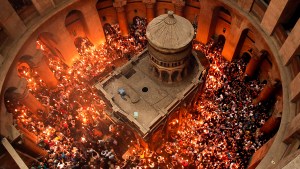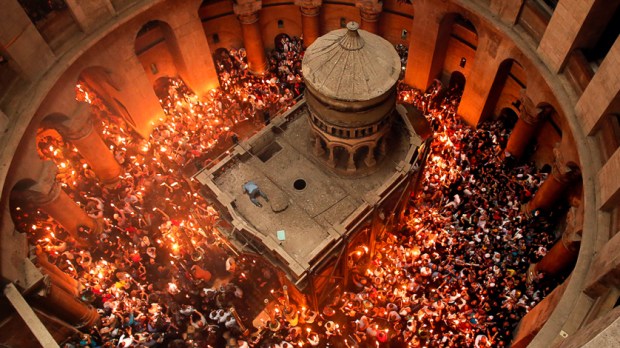The Tomb of the Holy Spulchre, also called the Edicule, was opened for the first time in centuries in 2016 and underwent extensive renovations. During that time, samples of mortar were extracted for dating. The results give credence to the belief that this is, in fact, the site where Jesus was lain after being taken down from the cross.
National Geographic has the story:
During their year-long restoration of the Edicule, the scientists were also able to determine that a significant amount of the burial cave remains enclosed within the walls of the shrine. Mortar samples taken from remains of the southern wall of the cave were dated to 335 and 1570, which provide additional evidence for construction works from the Roman period, as well as a documented 16th-century restoration. Mortar taken from the tomb entrance has been dated to the 11th century and is consistent with the reconstruction of the Edicule following its destruction in 1009.
The mortar was tested and found to be from around the year 345, which falls in line with our historical records of Constantine’s efforts.
We know that Constantine, the first Christian Roman emperor, set out to discover the location of Jesus’s tomb in 325. His representatives were directed to a Roman temple, dedicated to Venus, which was built over the site. Constantine had the temple razed and further excavations revealed a small tomb dug into the limestone. Constantine built the Church of the Holy Sepulchre over it, and his architects removed the top of the tomb so they could build the beautiful Edicule.
Another piece of this historical puzzle comes from the most defining aspect of the tomb, the “burial bed.” Burial beds are long shelves or tables where the body of the deceased would be laid. The “burial bed” in the Tomb of the Holy Sepulcre was covered with a marble cap, which is believed to have been installed between 1300 and 1555. This cap was lifted during the restoration and an older broken marble slab was revealed.
These new tests have shown that this older slab was most likely mortared in place during the 4th century, under the orders of Emperor Constantine.

Read more:
The Holy Sepulchre: Archaeology says the Evangelists were right
Read more:
Mysteries surrounded the opening of Jesus Christ’s tomb

